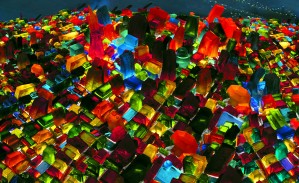How Much is that Cupcake seen in Microsoft Windows?
 SFGate has a little article on the little gems of cakey goodness...and highlighted a fellow blogger!
SFGate has a little article on the little gems of cakey goodness...and highlighted a fellow blogger!Nobody's more creative than Cheryl Porro, a 34-year-old San Francisco chemical engineer who, one year ago, started a blog called Cupcake Bakeshop by Chockylit. A self-proclaimed baker, she started churning out treats for her family at the age of 8.Porro's blog, filled with step-by-step pictures and wacky recipes, has tons of sweets lovers eagerly awaiting her semi-regular posts, which are complete with her tales of inspiration.
"If I go to a restaurant and have something fabulous, like a lychee martini, I'll say, 'I've got to have that in a cupcake,' " she says. She'll wind up spending an entire day in a sugar-buzzed frenzy until that drink has found its way into one of her signature pleated white cupcake liners.
Although Porro's recipes are available to anyone with an Internet connection, only her friends and family get to sample the fruits of her labor. "I tried doing cupcakes for someone's wedding a few years ago," she says, "and even with a laid-back bride, it was the most stressful experience of my life."













